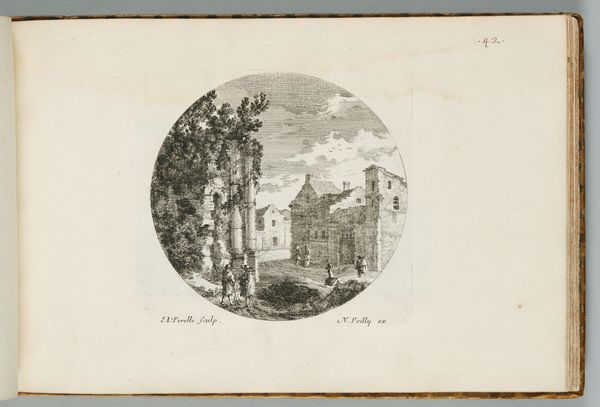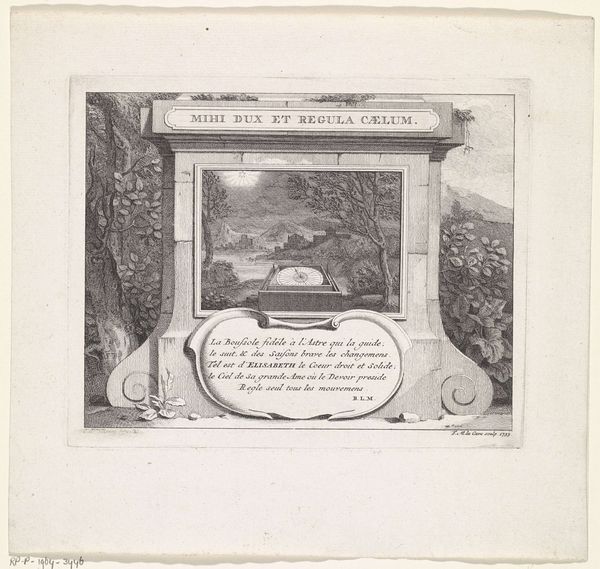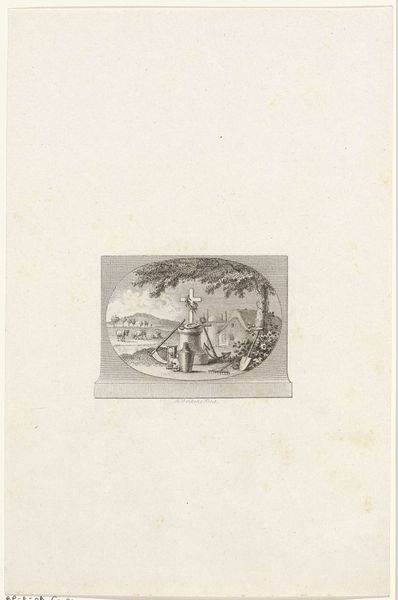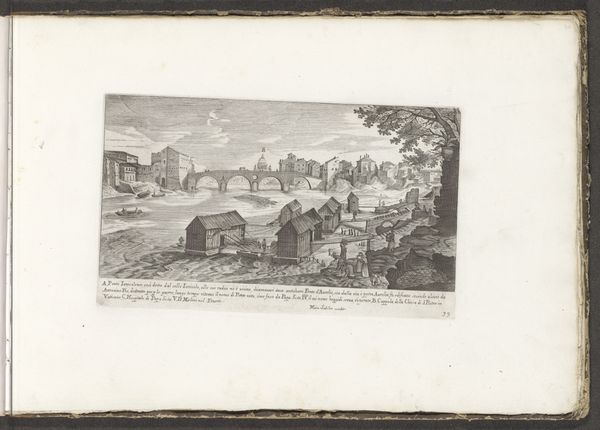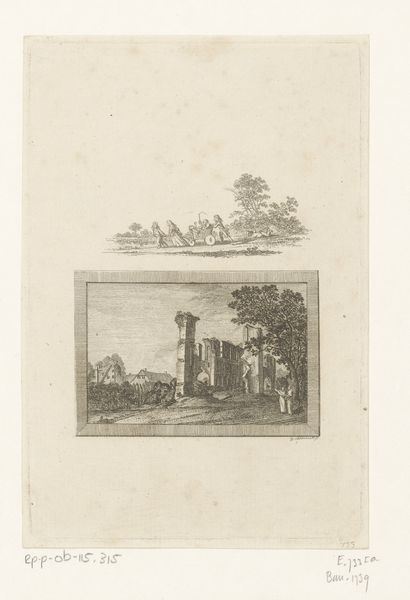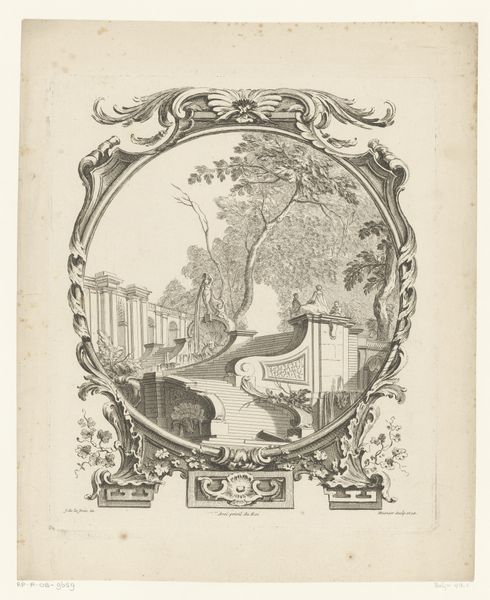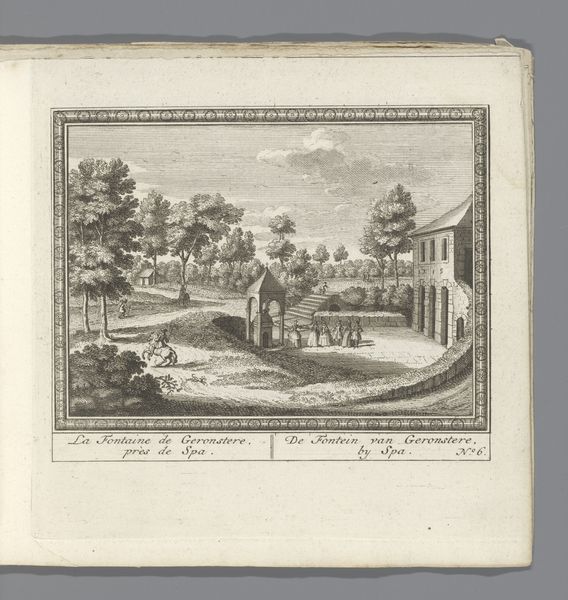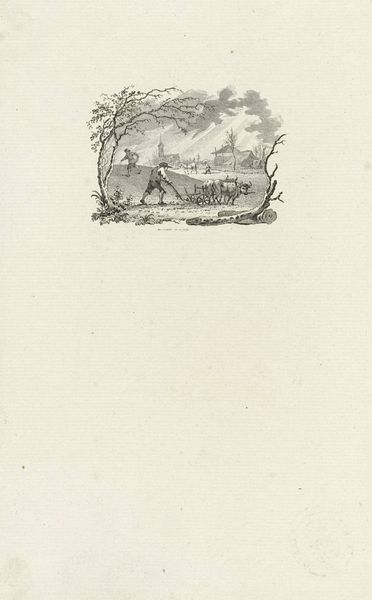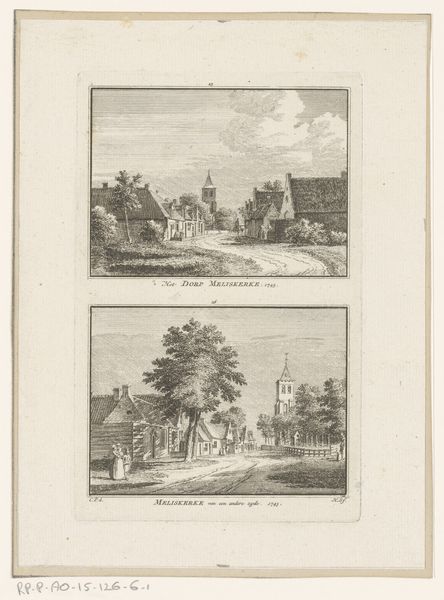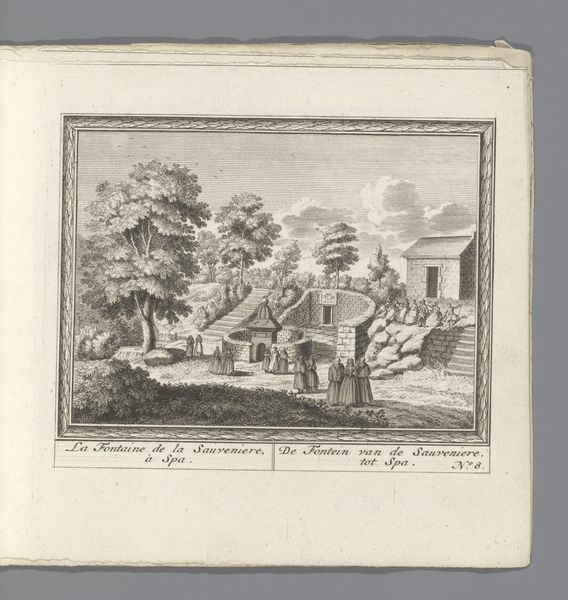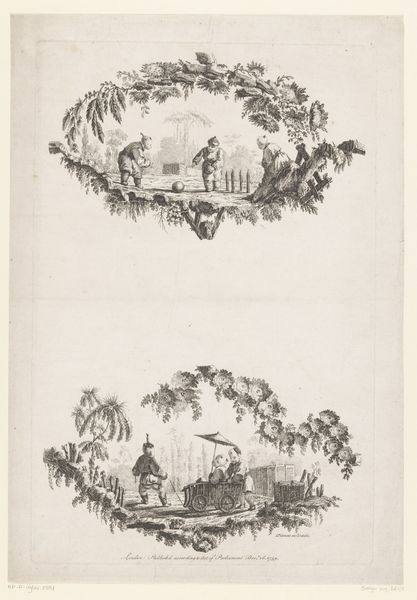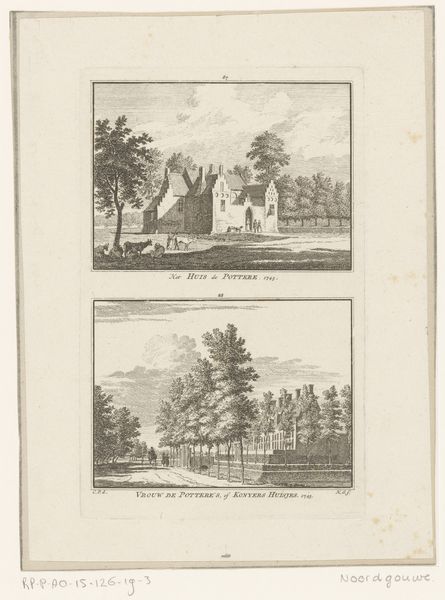
drawing, print, engraving
#
drawing
#
dutch-golden-age
# print
#
old engraving style
#
landscape
#
romanticism
#
cityscape
#
genre-painting
#
engraving
Dimensions: height 220 mm, width 140 mm
Copyright: Rijks Museum: Open Domain
Editor: This is "Gezicht op het dorp Zuid-Beijerland," created by Anna Catharina Brouwer between 1791 and 1793. It's an engraving, a tiny snapshot framed by an oval. I’m struck by the repetition of the simple forms of the houses; what stands out to you? Curator: The power of this piece rests in its graphic composition. Consider the lines; observe how the linear precision used in rendering the rooftops and fences contrasts with the more organic forms of the trees. What does this juxtaposition communicate? Editor: I suppose the rigid, man-made structures emphasize the cultivated, controlled aspect of the village versus the untamed natural world. It makes me wonder about how they saw the relationship between the two. Curator: Precisely. Note, also, how Brouwer frames the composition with a strong, dark, encircling oval line. It's an imposition of form onto a potentially infinite field. How does this technique affect your viewing experience? Editor: It definitely focuses my eye, keeps me within the scene, but it almost feels…artificial, somehow. Curator: Yes, that artificiality reinforces the artist's manipulation of space and perspective for aesthetic, rather than purely representational, ends. The use of a dark frame in contrast to a light backdrop provides us with clarity but also keeps us from an organic exploration of its form. The piece below even reinforces this artificial boundary. Editor: I see, so Brouwer is making choices about structure and form to convey a certain message. It’s not just a straightforward depiction. Curator: Indeed. We must recognize and address the artistic devices used to construct and contain this image; once we accept it is an artwork, not just a vision, we come to appreciate what we’ve come to term romanticism today. Editor: This close formal analysis really unlocks the artistic intent. I had missed how the oval framing device emphasizes the artificial and pictorial rather than pure record. Thanks.
Comments
No comments
Be the first to comment and join the conversation on the ultimate creative platform.

